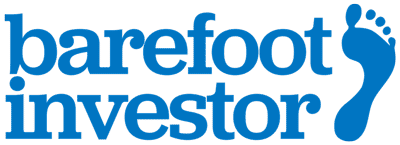How One Man Lost $500,000 Trading CFDs
Why on earth would anyone want to trade financial products that could potentially wipe you out? This is why.
I went out to the flicks the other night to see The King’s Speech. Great movie – horrible pre-show entertainment.
No sooner had I popped down my popcorn and settled into my seat than an ad touting the latest investment fad, Contracts for Difference (CFDs), came on.
The slick ad looked liked a movie: fast-moving shots of city skylines, goldmines, and wealthy dudes doing wealthy dude stuff. It even had its very own Hollywood-style voiceover man.
He seemed to be suggesting that, because everyday news events tend to impact financial markets, the choctop-chomping suburbanites sitting with me in the cinema could profit from these events by trading highly speculative derivative contracts.
Talk about a horror movie.
What are CFDs?
If you’re trying to piece together what the hell a CFD is, you’re perhaps one of the lucky ones. CFDs essentially allow you to make highly leveraged bets on which way a share price (or the price of gold, currencies, or two flies crawling up a wall) will move in the short term.
You only have to come up with an initial margin (think of it like a deposit) of 5 per cent of the value of the share, but the CFD gives you exposure to 100 per cent of the price movement. If the share price moves the wrong way, you can be potentially exposed to unlimited losses.
Huh?
One of the best descriptions of CFDs I’ve heard comes from none other than ASIC Commissioner Greg Medcraft, who said ‘they’re basically a way to borrow to gamble’.
Nice.
CFDs aren’t allowed in some countries because they’re too risky, and earlier this month the Financial Ombudsman Service called for investors to be banned from trading CFDs unless they can prove they understand these highly complex derivatives.
However, writing about CFD providers is fraught with peril. They’re the financial services’ equivalent of Scientologists: rich, powerful, and not afraid to throw around their influence.
‘How I Lost $500k’
One of the best descriptions of CFDs I’ve heard comes from none other than ASIC Commissioner Greg Medcraft, who said ‘they’re basically a way to borrow to gamble’.
So with that let me introduce you to John*, a 31-year-old bloke from Melbourne who thought he’d give trading a go. I spoke to him this week.
Why on earth would anyone want to trade financial products that could potentially wipe you out? Here was John’s thinking:
If he invested $10,000 of his savings into the share market and it went up 10 per cent he’d make $1,000. Big deal.
If he invested $10,000 of his savings into CFDs and it went up 10 per cent he’d make $10,000. Big deal!
John was completely out of his depth. He didn’t realise that trading is like a game of tennis – you need to know who your opponent is.
The people he was playing against were in many instances the big financial institutions, like Citibank, Goldman Sachs, Barclays, HSBC and CBA. These institutions’ employees aren’t so much traders as risk managers – people with advanced degrees in mathematics, years of training, sophisticated financial models, and collaborative trading offices all around the world.
“I was trading the price of gold, oil, the ASX 200 and currencies”, said John. “All the action happens overnight in America, while you’re asleep – or trying to sleep.”
“I did okay at the start, but I didn’t really know what I was doing. For me, all too often I’d get this kind of overriding, heart-racing moment where I thought things are going to turn around.”
“So I’d go deeper, and deeper … while the market kept going the wrong way. Too many times I woke up to find out I’d received an automated margin call email (to top up his trading account because of losses) from my CFD provider.”
Barefoot: “Wait, wait, wait … how many times did that happen?”
John: “Oh gosh, I reckon about 25 times … I think I lost about $250,000.”
It gets worse.
“My trading strategy didn’t involve stop-losses (a risk-strategy that automatically exits your position at a predetermined price, so you ‘stop the loss’). I didn’t see the point, because in many cases with a stop loss you’d get sold out at a loss, and then the market would move back and you would have ended up making money.”
But that didn’t happen one Friday night a few months ago.
“When I went to bed I didn’t realise that the market was having one of its ‘corrections’. I woke up in the morning and checked my account. I’d received multiple margin calls overnight that had gone unanswered, so my CFD provider sold my positions out.”
“I stared at my computer screen. I had just lost a further $250,000. In one day.”
“It wasn’t like I’d bought $250,000 worth of shares and they’d gone down to zero. I never had that money in the first place. And now I had a few days to come up with $250,000 to cover my side of the trade.”
Luckily John could afford to lose $500,000. He’s a successful financial advisor.
Tread Your Own Path!
*name changed
